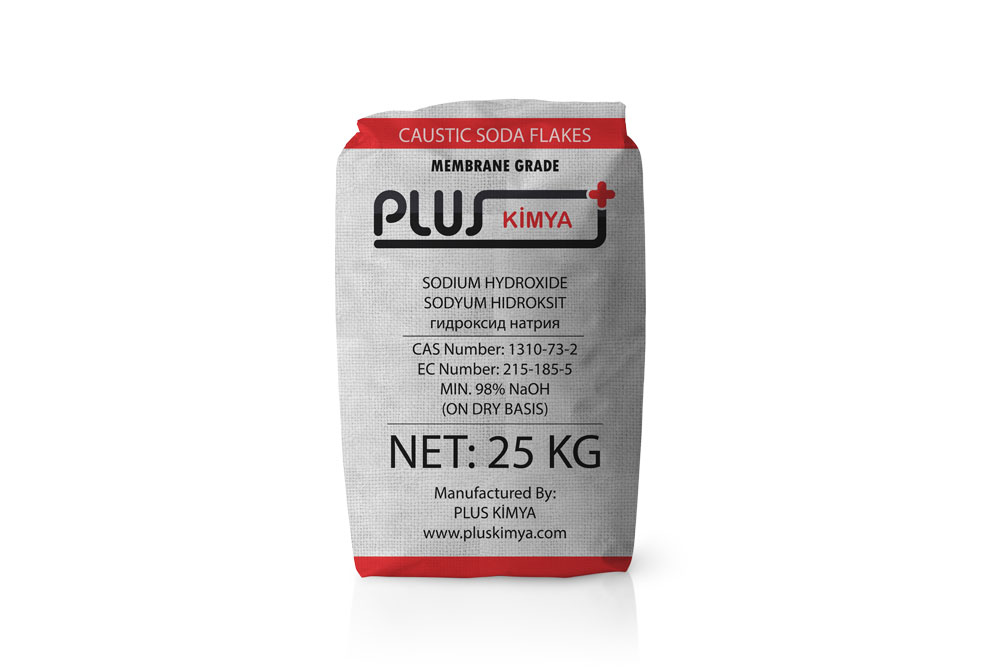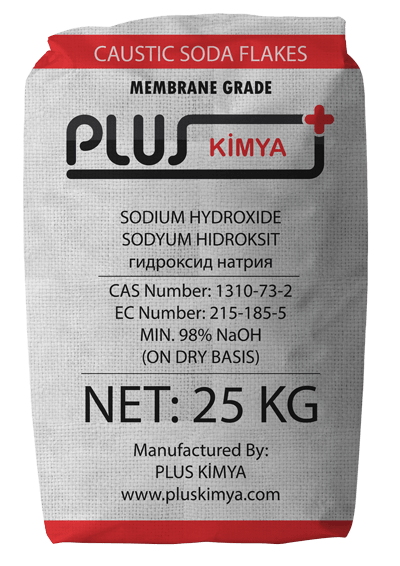

Caustic or sodium hydroxide and its chemical formula are NaOH. in English is also known as Caustic Soda. Caustic’s word meaning is mordant and abrasive. Reacts with skin in case of direct skin contact. White is a moisture-absorbing substance. It is a basic compound used in chemistry and many industries. Caustic, without any odor, readily dissolves in water and turns into a soft and slippery solution with a feeling of soap. Available in liquid or solid form; the liquid state is in the form of an aqueous and slippery solution. Although it is not known how the caustic substance was discovered in 1807 by Humphrey Day. Caustic, which has an itchy effect when touched with bare hands, does not occur naturally but is very easy to produce.
| Molar mass | 39.997 g/mol |
|---|---|
| Formula | NaOH |
| Density | 2.13 g/cm³ |
| PH | 13 |
| IUPAC ID | Sodium oxidanide, Sodium hydroxide |
| Soluble in | Su, Etanol, Metanol |
Sodium hydroxide is used to manufacture many everyday products, such as paper, aluminum, commercial drain and oven cleaners, and soap and detergents.
Sodium hydroxide is used to manufacture soaps and a variety of detergents used in homes and commercial applications. Chlorine bleach is produced by combining chlorine and sodium hydroxide. Drain cleaners that contain sodium hydroxide converts fats and grease that can clog pipes into soap, which dissolves in water.
Sodium hydroxide is used to help manufacture a variety of medicines and pharmaceutical products, from common pain relievers like aspirin to anticoagulants that can help to prevent blood clots, to cholesterol-reducing medications.
In the energy sector, sodium hydroxide is used in fuel cell production. Fuel cells work like batteries to cleanly and efficiently produce electricity for a range of applications, including transportation; materials handling; and stationary, portable and emergency backup power applications. Epoxy resins, manufactured with sodium hydroxide, are used in wind turbines.
Municipal water treatment facilities use sodium hydroxide to control water acidity and to help remove heavy metals from water. Sodium hydroxide is also used to produce sodium hypochlorite, a water disinfectant.
Sodium hydroxide is used in several food processing applications, such as curing foods like olives or helping to brown Bavarian-style pretzels, giving them their characteristic crunch. Sodium hydroxide is used to remove skins from tomatoes, potatoes, and other fruits and vegetables for canning and also as an ingredient in food preservatives that help prevent mold and bacteria from growing in food.
In many papermaking processes, wood is treated with a solution containing sodium sulfide and sodium hydroxide. This helps dissolve most of the unwanted material in the wood, leaving relatively pure cellulose, which forms the basis of the paper. In the paper recycling process, sodium hydroxide is used to separate the ink from the paper fibers allowing the paper fibers to be reused again.
Sodium hydroxide is also used to refine raw materials for wood products such as cabinets and furniture and in wood bleaching and cleaning.
Sodium hydroxide is used to extract alumina from naturally occurring minerals. Alumina is used to make aluminum and a variety of products including foil, cans, kitchen utensils, beer kegs and airplane parts. In building and construction, aluminum is used in materials that enable building facades and window frames.
Sodium hydroxide is used in many other industrial and manufacturing processes. It is used to manufacture rayon, spandex, explosives, epoxy resins, paints, glass, and ceramics. It is also used in the textile industry to make dyes, process cotton fabric and in laundering and bleaching, as well as in metal cleaning and processing, oxide coating, electroplating and electrolytic extracting.

Copyright © 2023 SUNPLUS KİMYA SAN. TİC. LTD. ŞTİ. All Rights Reserved.